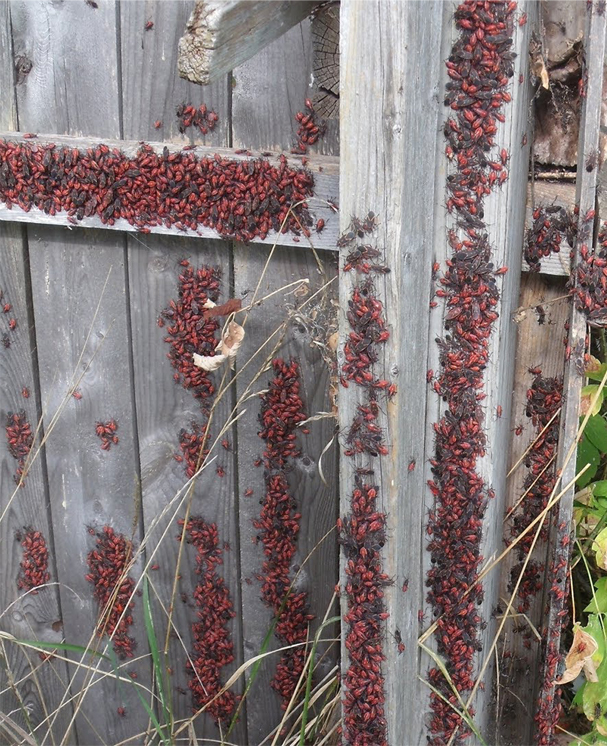As autumn begins in the north temperate zone, many residents will find boxelder bugs (Boisea trivitatta or Boisea rubrolineata) taking sanctuary on or in house. A quick search online will lead to various "How To" Guides for bug removal.
Outside the home boxelder bugs may gather in huge numbers, harmlessly seeking the sun's warmth on the south sides of buildings. The bugs may also track thermal leaks from homes and follow cracks into the interior. Bugs inside are a good wake-up call that we're aggravating climate change while the bugs aggravate us. Trapped inside a home, the bugs will gradually die due to lack of water or food.
Here at Soapberry Bugs of the World encourage people to collect indoor bugs and move them to sunny dry spot outside. Perhaps for major infestations a vacuum cleaner would speed the process. But at the same time, attempt to discover and seal the entry routes.
Outside the home, we suggest leaving them be, and sending us photographs! It's true that the feces from large swarms of insects can leave stains on light colored surfaces. These can be cleaned with soapy water, but if you decide that you prefer to execute the insects, that soapy water, which has reduced surface tension compared to water alone offers a solution. Splashed upon your six-legged housemates, it will enter their trachea (the airways through which insects breathe), and drown them on the spot.
If you are looking for additional information, Utah State University has produced a very informative video covering everything from boxelder bug biology to their removal. Utah has an entire 'Box Elder County', so they know what they are talking about. Additionally, University of California Davis has a wonder guide regarding integrated pest management of box elder bugs.

- Boisea rubrolineata - Range: Western United States and Southwest Canada
Hosts: Acer grandifolium (Bigleaf Maple), Acer negundo (Box Elder or Maple Ash), Acer saccharinum (Silver Maple, River Maple, or Soft Maple, Koelreuteria paniculata (Goldenrain Tree), and Sapindus saponaria var. drummondii (Western Soapberry)
Physical description: Identical to B. trivittata except the veins of the corium are prominent and red in color.
May resemble: B. trivittata (veins of the corium are not red) - Boisea trivittata - Range: Southern Canada, Eastern United States, Mexico, and Guatemala
Hosts: Acer grandidentatum (Bigtooth Maple), Acer negundo (Box Elder or Maple Ash), Acer saccharinum (Silver Maple, River Maple, or Soft Maple), Acer buergerianum (Trident Maple), and Sapindus saponaria (Soapberry)
Physical description: Entirely black in color except for the eyes, sides and center line of pronotum, margins of corium, coxae, and posterior ends of abdominal segments, which are all red.
May resemble: B. rubrolineata (veins of the corium are red)


